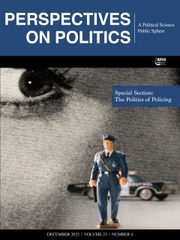I thank Dave Bridge for his generous review. In this too-short reply, I will evaluate the state of the “democracy gap” and respond to two questions Bridge raised in his review.
In the time since Bridge reviewed A Supreme Court Unlike Any Other and the writing of my response here, Donald Trump won the presidency by capturing both the popular and electoral college votes. He was the first Republican to do so since 2004 and only the second since 1988. While Trump still fell short of winning a majority of the vote (49.5%), the victory was nevertheless a significant one from the standpoint of the Supreme Court. After all, the Court—packed with three Trump-appointed justices and six conservatives—had begun to implement its deeply conservative principles in its decision-making soon after the end of Trump’s first term. Most significantly, it struck down Roe v. Wade, constitutionally discarded higher education admissions policies on affirmative action and suggested it was prepared to expand presidential power significantly.
So, how should we evaluate the election results within the context of these decisive decisions? One might argue that Trump’s victory shows the democracy gap is not as significant as I argue in A Supreme Court Unlike Any Other. After helping to deliver a conservative Court, he performed better than he had in previous campaigns. However, this assumes that the Court was a significant issue during the campaign. And somewhat surprisingly, it was not, largely because Democratic nominee and Vice President Kamala Harris chose not to emphasize the Court in her short campaign. This was surprising for two main reasons. First, the Court’s popularity was at an historical low. Second, before he dropped out of the race, President Joe Biden clearly signaled that an anti-Court message would be a highlight, if not a centerpiece, of his campaign. But Harris didn’t grab the baton, choosing instead to focus on the issue of abortion as a means of critiquing the Court.
This update helps me to respond to Bridge’s question about the “deviant” nature of judicial review from a regime politics perspective. At the very least, Trump’s victory shows voters were not self-motivated to reject a Supreme Court that is more distant from American democracy than its predecessors. But exit polls suggest that the Court didn’t matter much in the election, and—much to Harris’s chagrin—abortion didn’t matter enough to alter the results. So, while judicial review is still politically constructed, it has not recently been constructed under the terms of majoritarianism. And for the counter-majoritarian nature of the Court to matter at election time, the case needs to be made to the people. In 2024, Democrats didn’t succeed in making that case.
This leads to Bridge’s convincing concern that an 18-year term might undermine the Supreme Court’s independence. With Trump’s victory, talk of limiting life tenure for the justices is yesterday’s news. Instead, the focus has turned to whether judicial independence has already been sufficiently diminished by a Court ideologically aligned with a president intent on institutional disruption—or if that Court will challenge some of his more aggressive actions. In the last sentence of my book, I write about the need for the Supreme Court to “restore its standing across the land at a time when we may need it most.” That time may very well have arrived. If it has, we will soon know the state of the Court’s independence without the need to worry about the potential effects of an 18-year term for the justices.

